博耐顿女校作为英国顶尖的私立寄宿制女校,以其世界一流的设备和学术成就而闻名,不仅为女生提供安全舒适的环境,还专注于学生的学术学习和个人发展,因此,越来越多的学生去该校留学,可是入读私校要经过笔试,下面,小编就为大家带来了博耐顿女校Benenden School year12生物学入学考试笔试题库,希望对大家有所帮助:

生物学
时间:1小时30分钟
考生须知:
•尝试本小册子中的所有问题-请用深色钢笔/铅笔写清楚
•可以使用计算器
•一定要校对你的答案
•这篇笔试的总分= 100分
Q1.
A group of students investigate the effect of exercise on breathing rate.
They measure their breathing rate at rest by counting breaths per minute.
They then exercise by running on the spot.
After exercise they measure their breathing rate by counting breaths per minute.
These are their results.

(a) Display these results in a table.
(b) Explain why breathing rate is higher after exercise.
(c) Explain how the students could improve their investigation.
Q2.
A student investigates the effect of carbon dioxide concentration on the rate of photosynthesis in a water plant.
The graph shows the student's results.
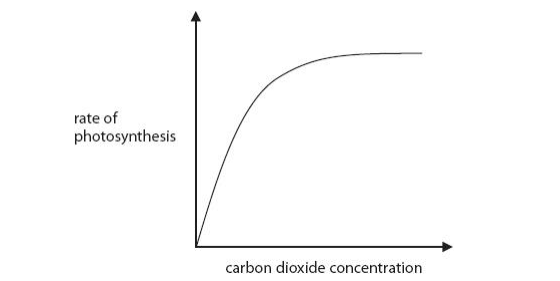
(a) Put an X on the graph to show where carbon dioxide limits the rate of photosynthesis.
(b) Write the word equation for photosynthesis.
(c) The student's method allows her to make a valid and reliable comparison of the rate of photosynthesis at different carbon dioxide concentrations.
(i) Give the independent variable in her investigation.
(ii) Suggest a variable the student needs to control in her investigation.
(iii) Explain how the student could make sure her results are reliable.
Q3.
The photograph shows a mammal called a mountain hare.
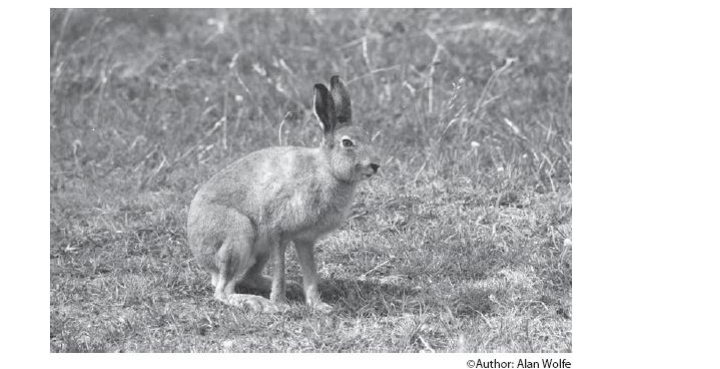
Mountain hares eat plants.
Foxes, cats and eagles are predators that eat mountain hares.
(a) (i) Use this information to draw a food web.
(ii) Give the name used to describe animals that eat plants.
(b) Scientists want to find out which type of plant habitat mountain hares prefer.
• They use quadrats to sample seven habitats.
• Each habitat contains a different type of plant.
• The scientists calculate the percentage of quadrats in each habitat where mountain hare
• faeces are found.
• The graph shows the results.
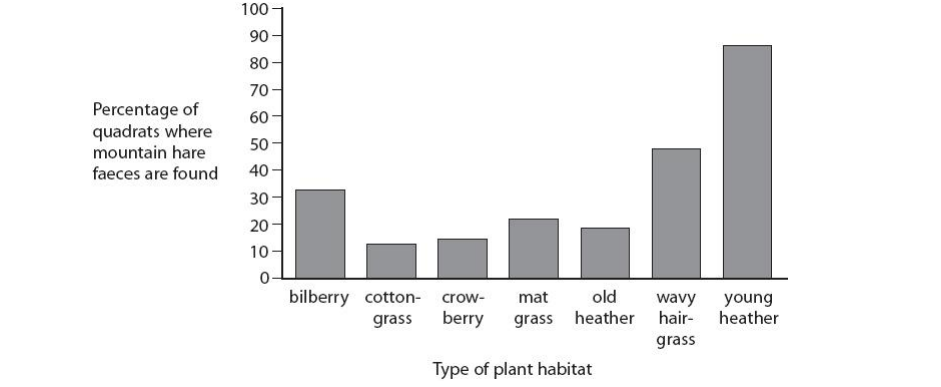
(i) Name the type of plant habitat that the mountain hares like best.
(ii) Suggest three reasons why mountain hares may prefer to eat the plants in some habitats rather than plants in other habitats.
(c) The scientists use 700 quadrats in one plant habitat and find that 224 quadrats contain mountain hare faeces.
(i) Calculate the percentage of quadrats containing mountain hare faeces in this habitat. Show your working.
(ii) Name the type of plant habitat where the scientists collected these results.
(d) The scientists use a large number of quadrats to make sure the data collected is reliable.
Describe a procedure they should follow to make sure the data collected using quadrats is valid.
Q4.
The diagram shows two types of cell division.
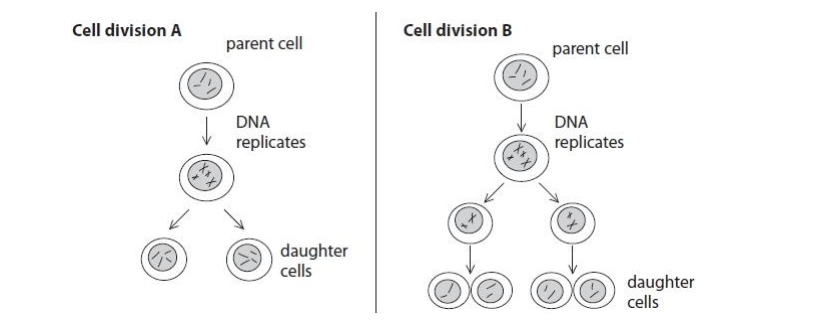
(a) Give the name of cell division A.
(b) Using the information in the diagram, give two differences between cell division A and cell division B.
(c) Name a part of a flowering plant where cell division A occurs and a part where cell division B occurs.
Q5.
Pneumoconiosis is a lung disease caused by breathing in coal dust particles.
The X-ray shows the lungs of a person with pneumoconiosis.
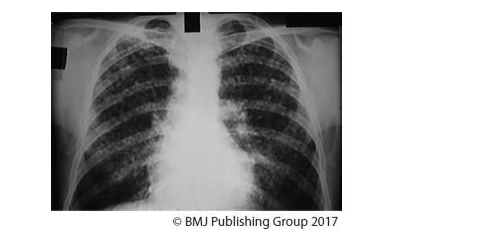
Coal dust particles collect in the alveoli and cannot be removed.
Cells grow around these coal dust particles, forming tissue that traps the particles.
(a) State what is meant by the term tissue.
(b) Suggest why pneumoconiosis reduces the ability of a person to exercise.
(c) In the UK, in 2013, breathing in dust particles resulted in diseases that caused 260 000 deaths.
The graph shows the number of these deaths caused by breathing in dust particles of asbestos, coal and silica.
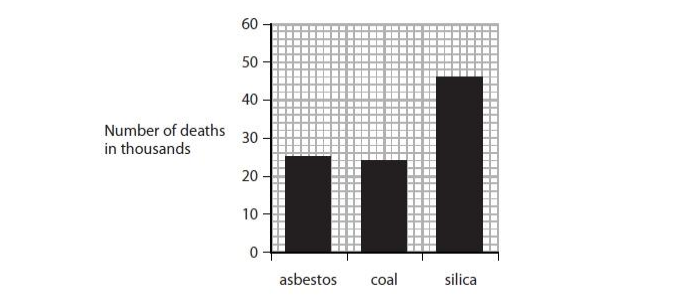
(i) Calculate the number of deaths in the UK, in 2013, caused by breathing in dust particles other than asbestos, coal or silica.
(ii) Give two conclusions that can be made from the data in the graph.
Q6.
A student carries out an experiment to investigate the effect of different concentrations of a food dye on diffusion.
(a) Describe what is meant by the term diffusion.
(b) The student adds a different concentration of coloured food dye to each of five wells in an agar plate. The diagram shows the agar plate at the beginning of the experiment and after 24 hours.
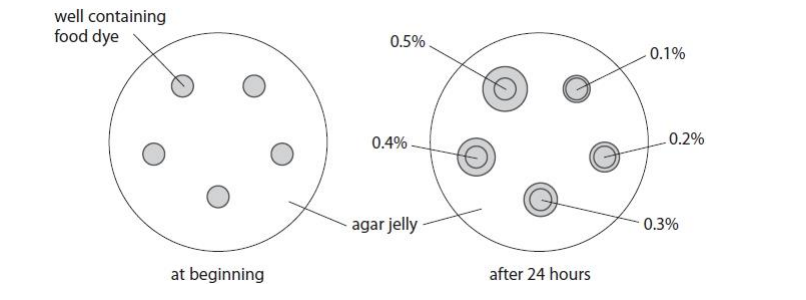
The student does the experiment using three plates.
For each plate he measures the diameter of each circle to see how far the food dye has diffused. The table shows his results.
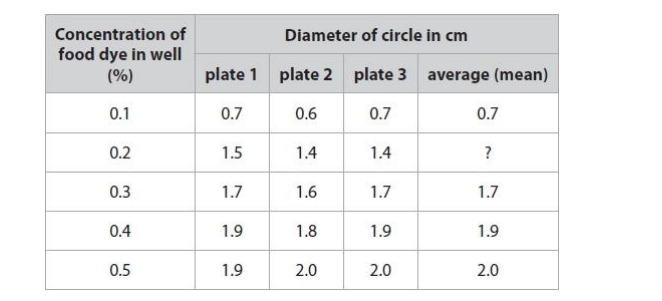
(i) Calculate the average diameter for 0.2% concentration of food dye.
(ii) Describe the effect of food dye concentration on diffusion.
(iii) Explain the relationship between food dye concentration and diffusion.
(c) State two variables that the student should control in this experiment to ensure that the results are valid.
Q7.
Biological washing powder contains enzymes to remove stains from clothes.
Describe an investigation to find the temperature at which biological washing powder is most effective at removing stains.
Your answer should include experimental details and be written in full sentences.
Q8.
A meal contains different food components.
(a) The table lists some of the components in the meal.
Complete the table by giving the function of each component. One has been done for you.
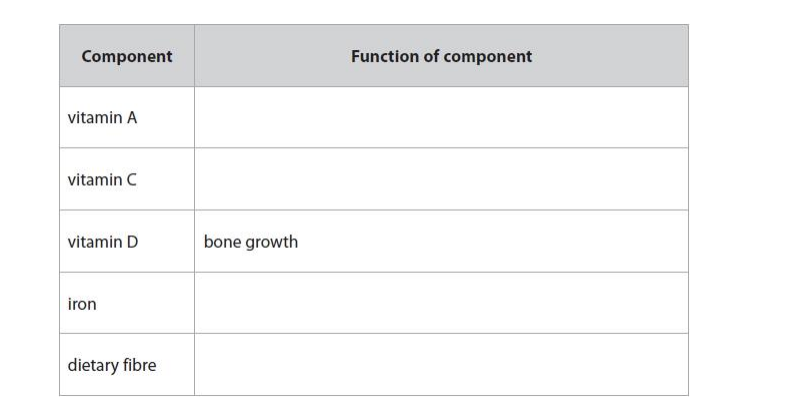
(b) Describe a test to show that the meal contains glucose.
(c) The meal also contains lipids and proteins.
(i) Give the three chemical elements found in lipids and also found in proteins.
(ii) The table lists two substances involved in the digestion of lipids. Complete the table by naming an organ that produces each substance.
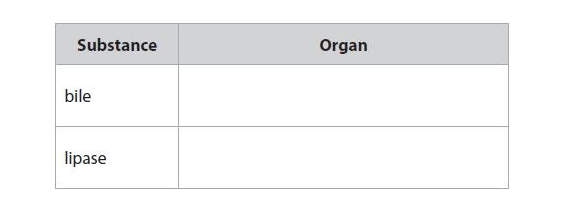
Q9.
(a) The table lists descriptions of what happens in different human organs. Complete the table by giving the correct organ for each description.
The first one has been done for you.
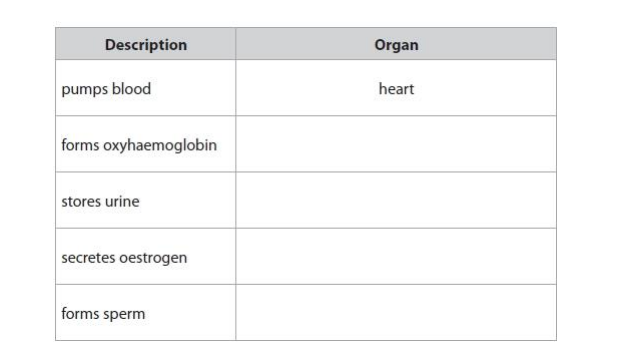
b) Describe the structure of the kidney.
Refer to the structure of the nephron in your answer.
Q10.
Human blood contains red blood cells and white blood cells.
Different situations can cause changes in the numbers of these blood cells.
The table shows some of these changes.

(a) Explain why poor diet can cause a change in the number of red blood cells.
(b) Suggest why athletes often live at high altitude before competing in a long-distance race.
(c) Explain how the change in the number of white blood cells during therapy for cancer could be a risk to the patient.
Q11.
(a) Diagram 1 shows a section through an eye with parts labelled A to F.
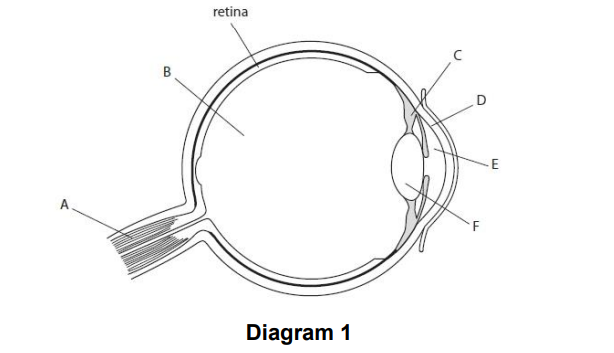
(i) Give the letter that labels the cornea.
(ii) Give the letter that labels a jelly-like fluid.
(iii) Give the function of part A.
(b) Diagram 2 shows a section through the eye of a person with a detached retina.
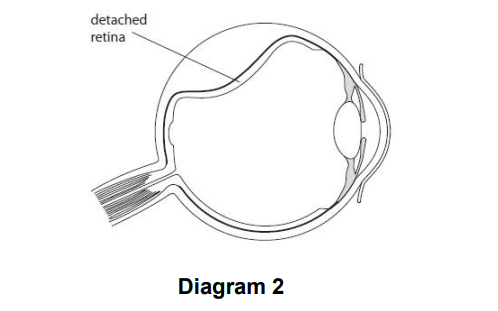
Suggest how a detached retina could affect vision.
Q12.
Plants can reproduce sexually or asexually.
Plants that reproduce sexually can be pollinated by insects or by wind.
(a)State three ways in which the structure of insect-pollinated flowers differs from the structure of wind-pollinated flowers.
1 ..............................................................................................................................................
.................................................................................................................................................
2 ..............................................................................................................................................
.................................................................................................................................................
3 ..............................................................................................................................................
.................................................................................................................................................
(b)The diagram shows a flower from a plant.
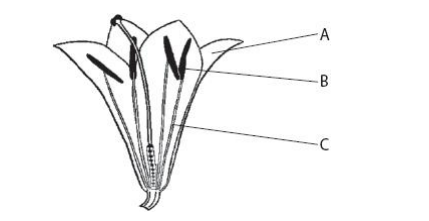
Name the structures labelled on the diagram
A ..............................................................................................................................................
B ..............................................................................................................................................
C ..............................................................................................................................................
(c) The flower in the diagram is insect-pollinated.
An insect carrying pollen lands on the flower.
Describe the events that lead to seed formation.
以上是关于博耐顿女校Benenden School year12生物学入学考试笔试题库的相关问题,总体来讲,低龄留学已成为了一种趋势,毕竟年龄越小,进入名校的机率越大。顶试留学是一所专注于英国低龄留学实行境内外一站式服务的机构,像留学选校、寻找寄宿家庭、寄宿生活、UKiset考试培训等提供全方位的留学咨询。在此,顶试留学预祝准留学生们都能学业有成!
想要获得已经就读该校的中国学生和家长关于学校的一手信息及评价?
扫码或长按添加微信
或者拨打电话进行咨询:
021-62110340
18217224528


点击“微信咨询”按钮
打开图示并自动复制微信ID“DSEdu1994”
打开微信,点击“添加朋友”,粘贴微信号并添加。











